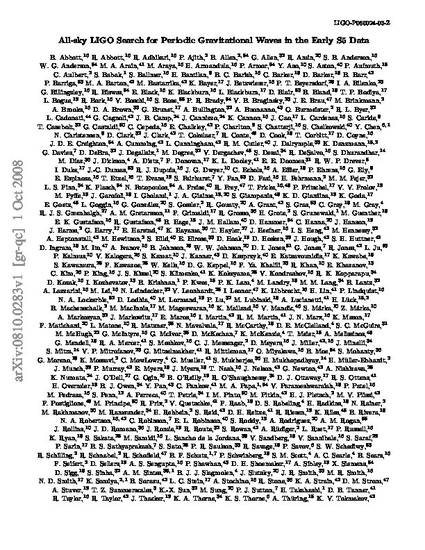
We report on an all-sky search with the LIGO detectors for periodic gravitational waves in the frequency range 50-1100Hz and with the frequency's time derivative in the range -5×10-9-0Hzs-1. Data from the first eight months of the fifth LIGO science run (S5) have been used in this search, which is based on a semicoherent method (PowerFlux) of summing strain power. Observing no evidence of periodic gravitational radiation, we report 95% confidence-level upper limits on radiation emitted by any unknown isolated rotating neutron stars within the search range. Strain limits below 10-24 are obtained over a 200-Hz band, and the sensitivity improvement over previous searches increases the spatial volume sampled by an average factor of about 100 over the entire search band. For a neutron star with nominal equatorial ellipticity of 10-6, the search is sensitive to distances as great as 500pc. © 2009 The American Physical Society.
Available at: http://works.bepress.com/tiffany_summerscales/148/
